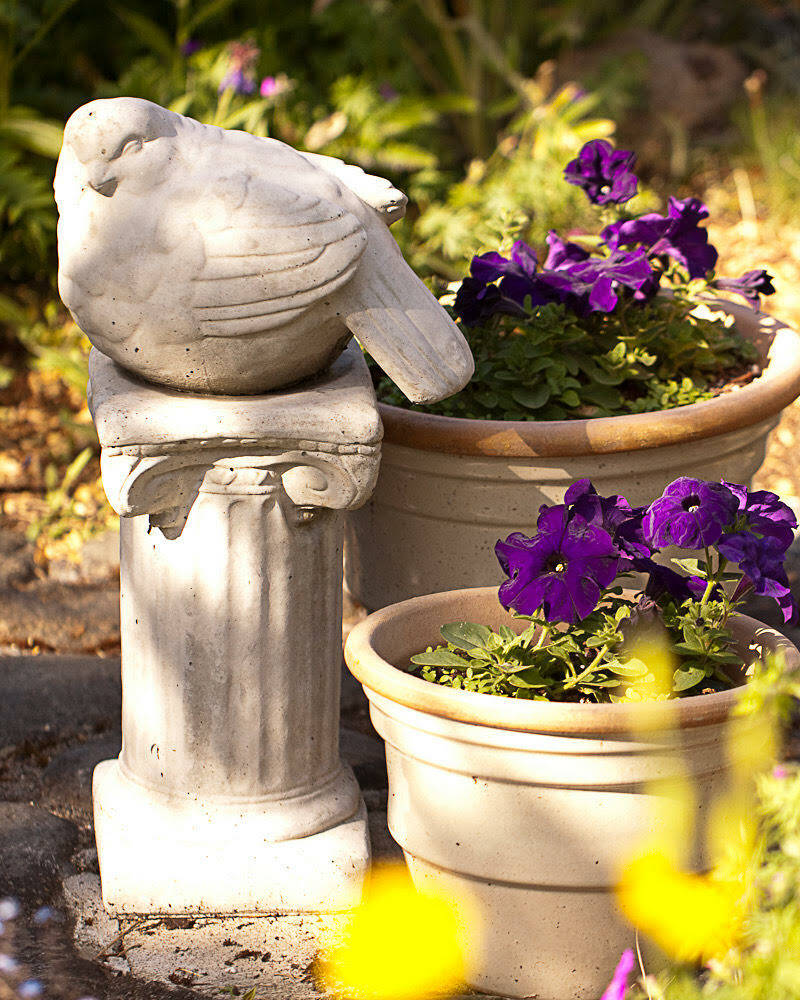As the weather dries, begin watering in earnest using drip irrigation, if possible. Otherwise, water early in the day to minimize evaporation and allow leaves to dry before nightfall. Deep, less frequent watering is best, as it encourages roots to go deeper.
Containers and hanging baskets may need water daily. To conserve moisture, add two to three inches of mulch to garden beds and around trees and shrubs. Patrol for slugs and aphids.
Flowers
June can be a “flowery” month. Plant annuals and deadhead faded flowers for more blooms. Trim back perennials, especially delphiniums, after blooming, to encourage a second blooming.
Stake plants that get top-heavy. Remove foliage from spring-flowering bulbs after it dies back naturally; divide bulbs, if necessary and replant or store until fall.
Continue to plant dahlias, begonias and gladioli. Deadhead and fertilize roses, checking for mildew and black spots. Remove and discard affected leaves; do not compost diseased plant parts. Pinch back chrysanthemums about ½ half inch when new growth reaches 6 inches for bushier plants and more blossoms; do not pinch chrysanthemums back after the Fourth of July.
Plant fall-blooming perennials and bulbs such as Star of Bethlehem, autumn crocus and hardy cyclamen. Don’t plant peonies until fall; leave recent purchases in their containers.
Trees/shrubs
Trees and shrubs do best when planted in early spring or fall. If you plant now, make sure to provide sufficient water throughout the summer. Fertilize trees and shrubs with slow-release fertilizer, if there are signs of nutrient deficiencies; water regularly and deeply.
Prune Japanese maples, removing dead branches and thinning lightly, if needed. Watch for tent caterpillars; strip or prune out nests and caterpillars as soon as noticed and destroy.
Fruit trees
Thin fruit (except for cherries) when about the size of a marble. Plums should be thinned to 2 to 4 inches apart on a branch; apples and pears should be thinned to one to two fruits per cluster spaced 6 to 8 inches apart on the branch.
Watch for signs of brown rot, scab and powdery mildew and spray with a fungicide according to the product’s label.
Veggies
Transplant herbs and warm-season vegetable starts into the garden including basil, tomatoes, cucumbers, squash and corn.
Place basil and tomatoes in the warmest available spot such as on the south side of the house with full sun exposure; cover when night temperatures fall below 50 degrees.
To avoid diseases, space tomatoes properly and support the plants using stakes, cages or trellises for good air circulation.
Stop harvesting asparagus when spears become smaller than a pencil; fertilize and allow tops to grow and store food for next year’s crop.
Watch for leafminers on beets, chard and spinach; remove and discard infested leaves. Handpick caterpillars found on leaves.
Lawns
Unless letting your lawn go dormant over the summer, water deeply at least twice a month and fertilize once during the last half of the month. Mow often enough to remove only one-third of the blade length.
Leave grass clippings on lawn to return nutrients to the soil. Avoid aerating lawns in early summer months to prevent damage of new growth.
Marilyn Stewart and Janet Oja are WSU-certified Clallam County Master Gardeners.
‘Brambling Along’
Join us for the upcoming Digging Deeper presentation “Brambling Along: Growing Raspberries and Blackberries in the Home Garden,” by Clallam County Master Gardener Jeanette Stehr-Green, from 10:30 a.m.-noon on Saturday, June 18, at the Woodcock Master Gardener Demonstration Garden, 2711 Woodcock Road. She will talk about growing raspberries and blackberries (caneberries). She will use caneberries growing at the demonstration garden to show how to trellis and prune these perennial plants. She will also touch upon problems commonly emerging from caneberry patches and how to prevent them.
Presentations and demonstrations cover basic gardening topics relevant to most home gardeners. Seminars are free, but donations to help support the WSU Clallam County Extension Master Gardener program or Master Gardener Foundation of Clallam County are appreciated. See extension.wsu.edu/clallam/master-gardener-calendar.


